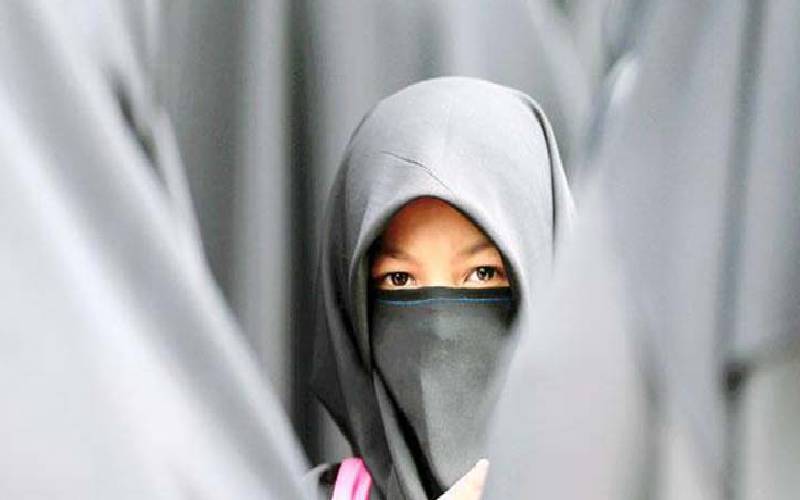I don’t cavalierly criticise rulings of the Supreme Court of Kenya (SCoK). But the SCoK’s hijab decision left me flummoxed. The court shockingly ruled – overturning a Court of Appeal opinion – that non-Muslim schools could ban the hijab. The ruling is yet another low point for the highest court in the land. I don’t want to impugn the intelligence of the SCoK judges. But I am aghast that prominent jurists could sanction prima facie discrimination contrary to the Constitution and international human rights standards. By casting its lot with Islamophobes, the court stokes the embers of a religious conflagration. Courts should only run ahead of society when they permit more freedoms and rights, not to deny or curtail them.
Let me tell you – and the judges – why the decision is boneheaded. First, freedom of religion and conscience is sacrosanct in the Kenyan Constitution. Only the most extreme – and compelling State reason – can vacate, or attenuate, this cardinal norm. The bar is so high that only the most egregious conduct can meet it. It boggles the mind why the justices thought the hijab – a most common article of clothing that has religious connotations – could threaten the “order” imposed by the dress code in non-Muslim schools. This is judicial paganism, the sort of legal formalism that is knuckleheaded. Which is of greater good – a puerile dress code or a millennia-old practice of religious piety and modesty that’s completely harmless?
Secondly, the court told the students to leave an important identifier of their faith outside the gates of non-Muslim schools. My lords took leave of their senses. The “non-Muslim” school is just a euphemism for a school for the majority Christian population in Kenya. Overtly Christian and secular public schools are important institutions in a majority Christian country. Secularism is itself an accommodation within Christianity. It means that Christians can informally – not formally – control political and social institutions. It only removes “formal” power from the Christian faith and its clerics but does nothing to take the substance of that power away. The SCoK’s ruling formally – unashamedly – gave the Christian faith back that power. It’s no longer a wink and nod.
Third, courts must be very careful in plural societies, especially on matters of religion, race, and ethnicity. Courts must never run ahead of society to curb rights and freedoms where there is no social or political controversy. Kenyans haven’t indicated that the hijab is a problem in school or in any other public square. Many of us have Muslim kin and we live together without raising an eyebrow. The hijab is like a shirt to me – completely uncontroversial. Why does the Scok want to make it an issue by sowing division? In the United States, my law students wear all sorts of regalia – the hijab, the yarmulke, the Islamic kufi, the cross, dashikis, and even baseball caps. It’s all unnoticeable.
Fourth, in Europe – where politicians and courts are deeply Islamophobic – we’ve seen attempts to curtail dress regarded as Islamic. The European Court of Human Rights has permitted some European States and Turkey to curtail such dress. In France, the furore over the burkini demonstrated the depths of religious bigotry in one of the world’s important democracies. Kenya doesn’t have a serious problem of Islamophobia. Why then should the SCoK attempt to pit Muslims against Christians over a non-issue? Will the court ban crosses, and short dresses worn by non-Muslim students in Muslim schools? This is a Pandora’s box the Scok shouldn’t open. Are long beards next? Methinks the SCoK shouldn’t make CJ David Maraga, a Seventh-Day Adventist, work on Saturday.
Fifth, courts must be careful when they wade in uncharted territory. This is especially true where a court’s decision bleeds into policy areas that are the remit of the political branches. In the hijab case, the SCoK made an inchoate educational policy. First, it shouldn’t have touched the case. But once it did, it should’ve avoided confusion, or adding to the fire.
The decision is discretionary for non-Muslim schools. Unacceptably, individual schools will decide whether, or not, to effect the ban. What’s the SCoK smoking? Either it’s a ban, or it isn’t. A uniform educational policy is necessary to avoid unequal treatment. As it is, some students will be denied education in schools of their choice.
Finally, nothing is more precious than life, freedom, and equality. The SCoK’s hijab policy discriminates on two grounds – gender and religion. Boys are unaffected. Did the court consider what in law we call the disparate impact of the ruling on girls? As lawyers in a democracy, we are taught that where in a conflict there’s a tie between the state as the censor and the speaker, the decision goes to the latter. That’s why the SCoK should’ve ruled for the vulnerable minority – the Muslim girls.
- The writer is SUNY Distinguished Professor at SUNY Buffalo Law School and Chair of KHRC. @makaumutua
 The Standard Group Plc is a
multi-media organization with investments in media platforms spanning newspaper
print operations, television, radio broadcasting, digital and online services. The
Standard Group is recognized as a leading multi-media house in Kenya with a key
influence in matters of national and international interest.
The Standard Group Plc is a
multi-media organization with investments in media platforms spanning newspaper
print operations, television, radio broadcasting, digital and online services. The
Standard Group is recognized as a leading multi-media house in Kenya with a key
influence in matters of national and international interest.
 The Standard Group Plc is a
multi-media organization with investments in media platforms spanning newspaper
print operations, television, radio broadcasting, digital and online services. The
Standard Group is recognized as a leading multi-media house in Kenya with a key
influence in matters of national and international interest.
The Standard Group Plc is a
multi-media organization with investments in media platforms spanning newspaper
print operations, television, radio broadcasting, digital and online services. The
Standard Group is recognized as a leading multi-media house in Kenya with a key
influence in matters of national and international interest.









